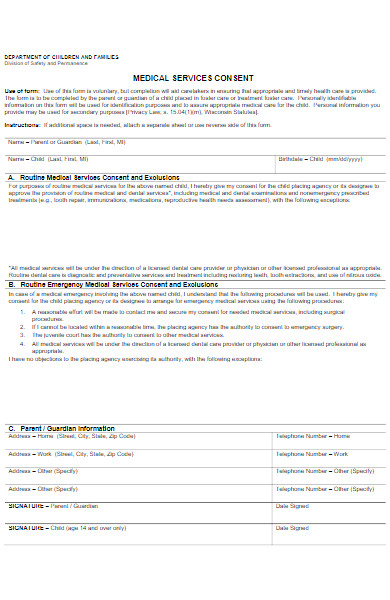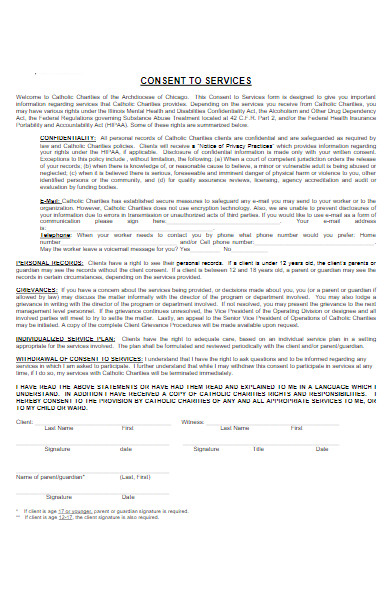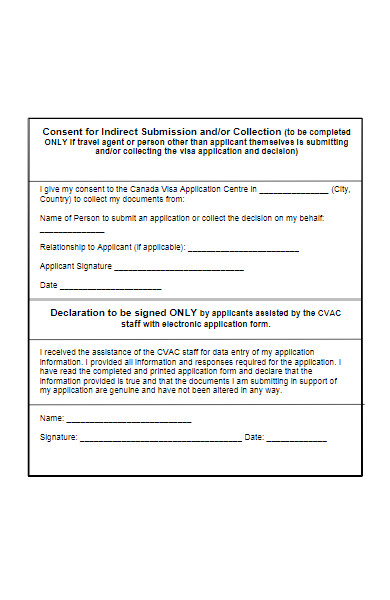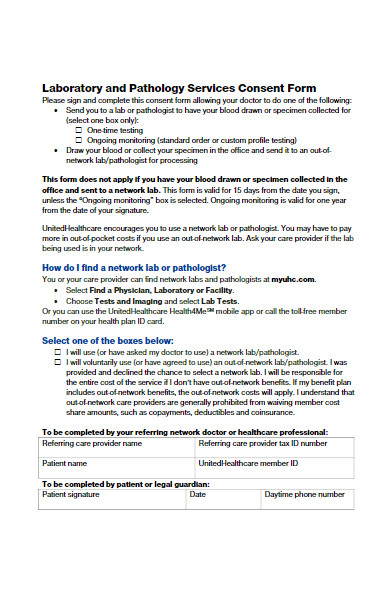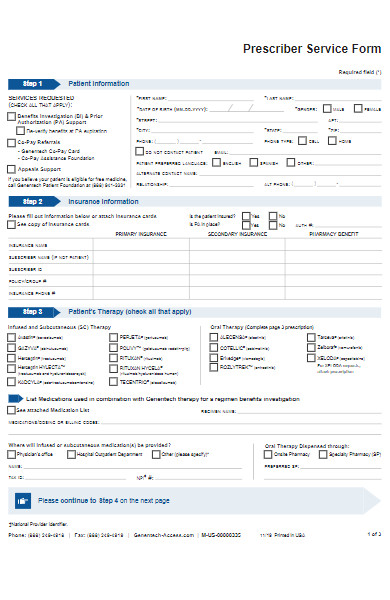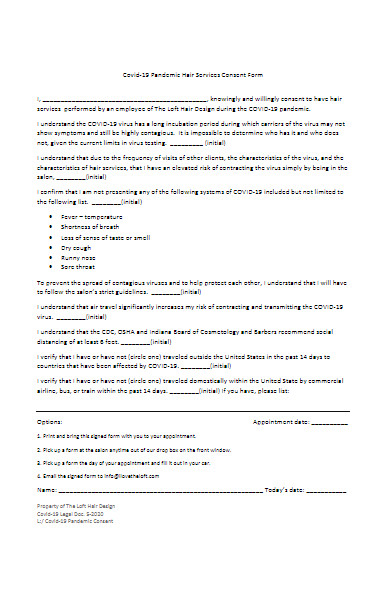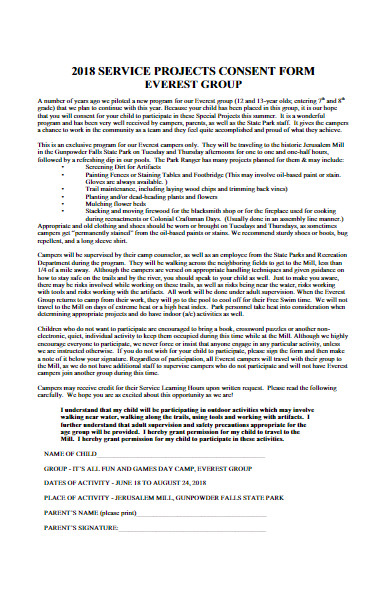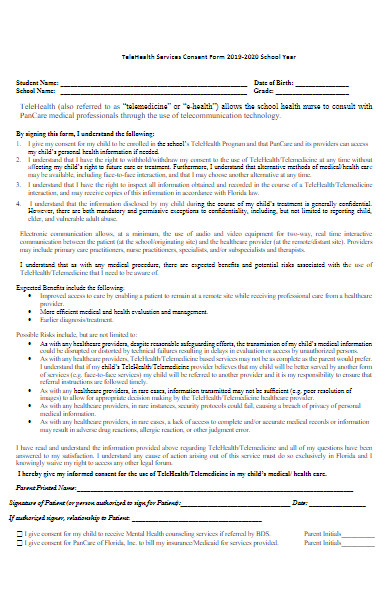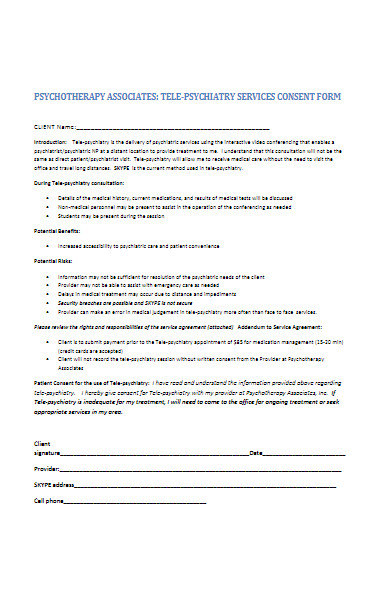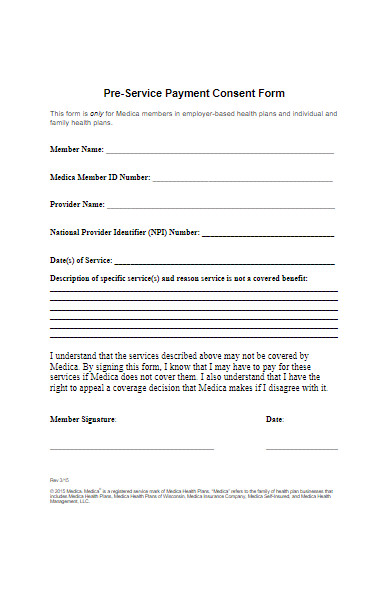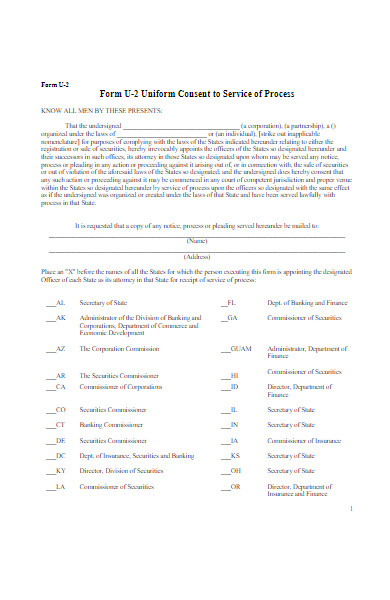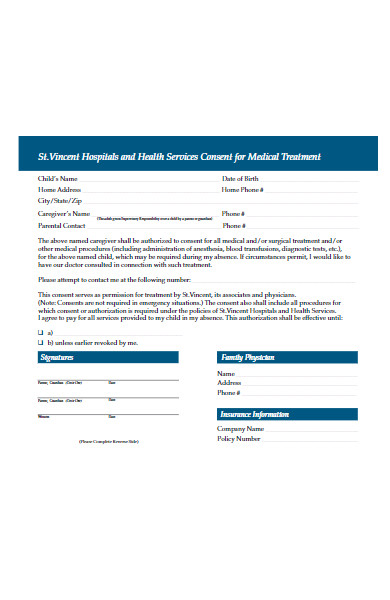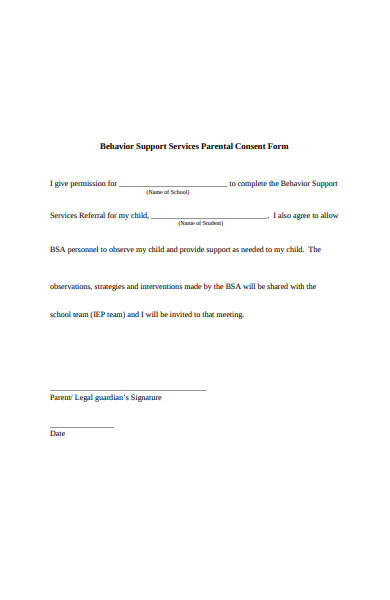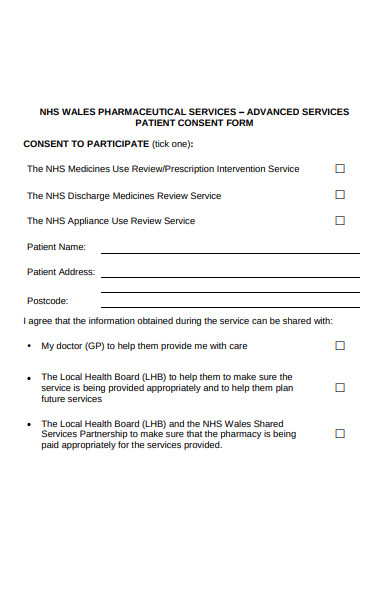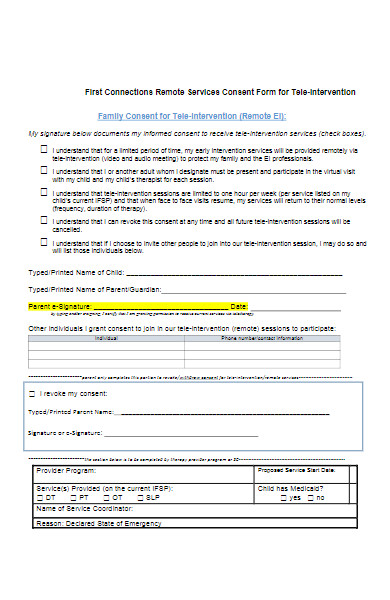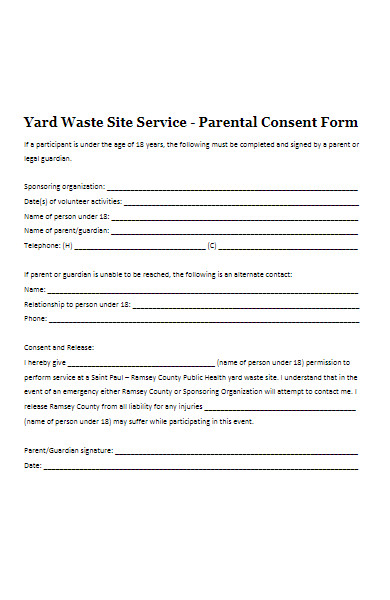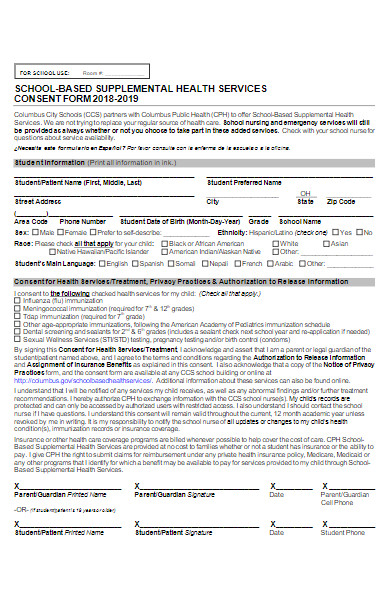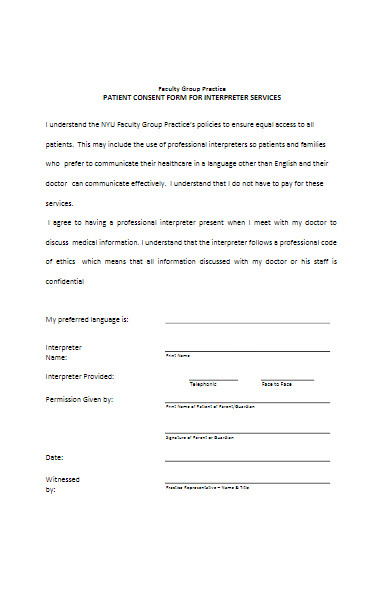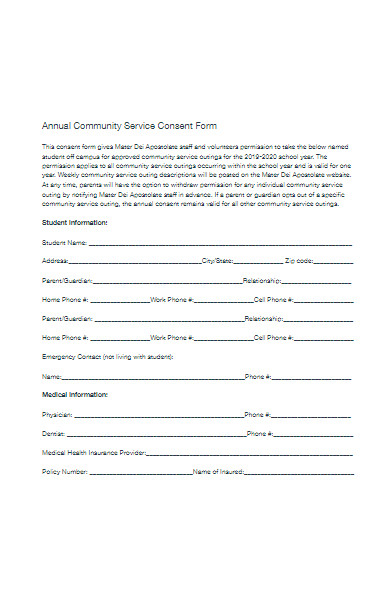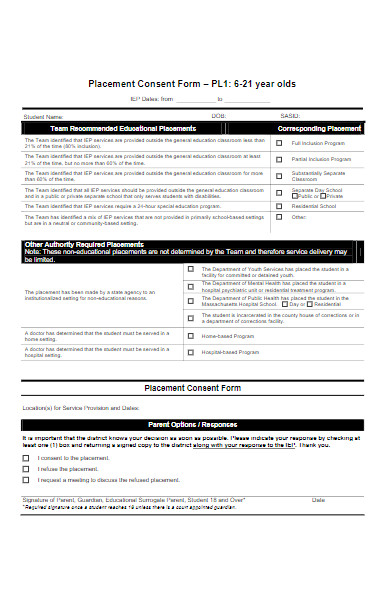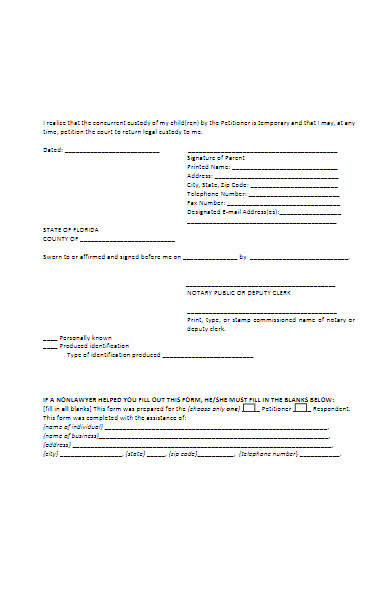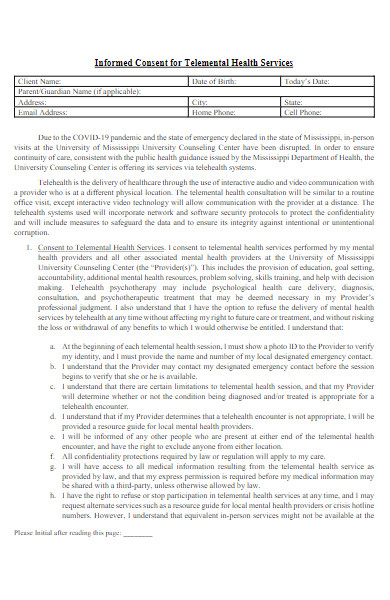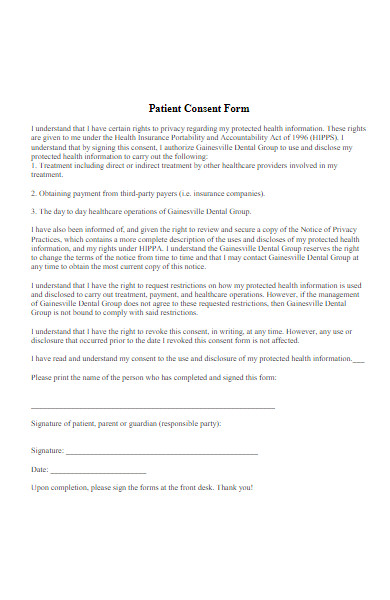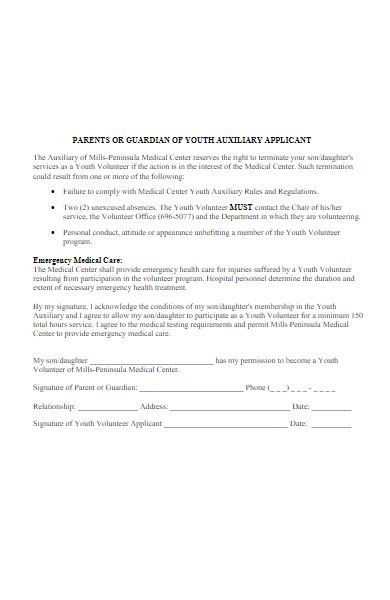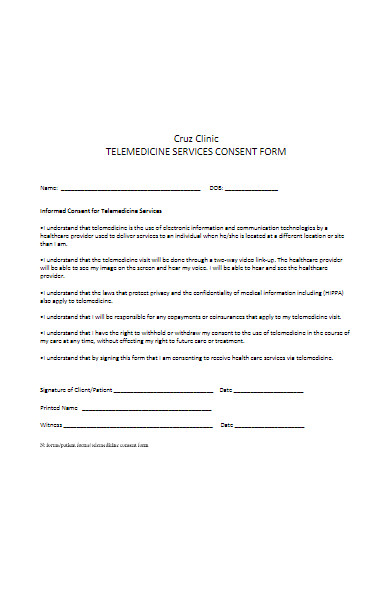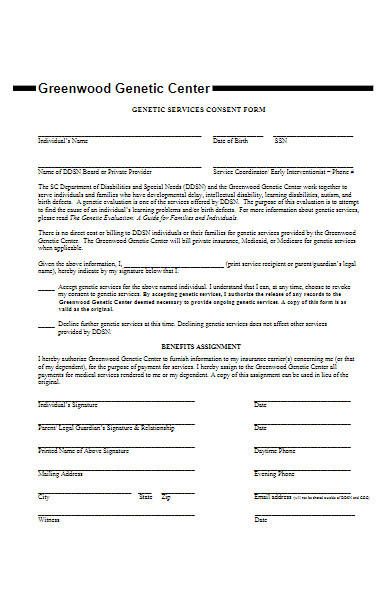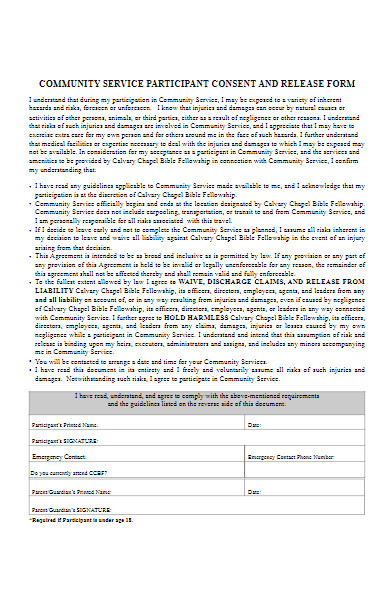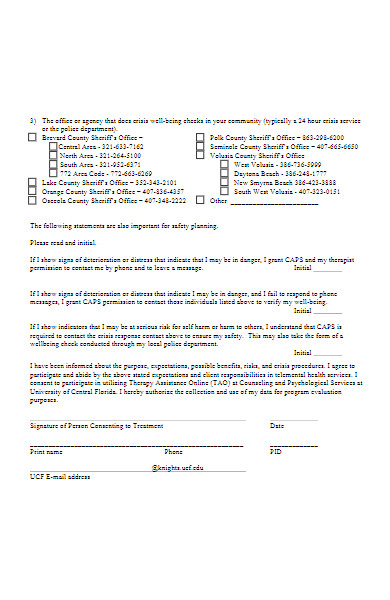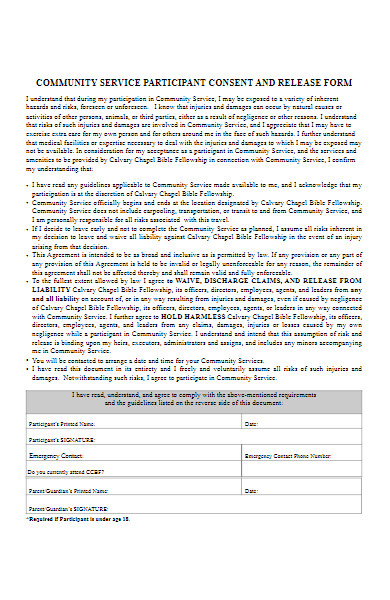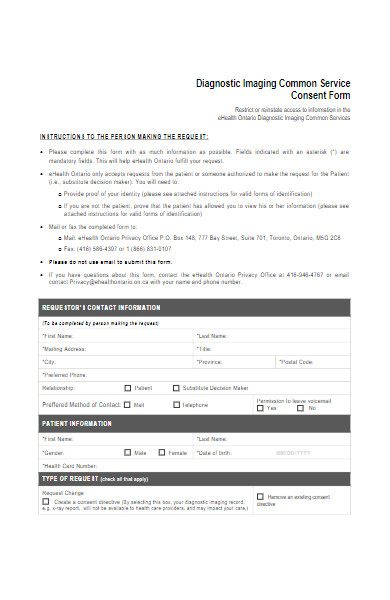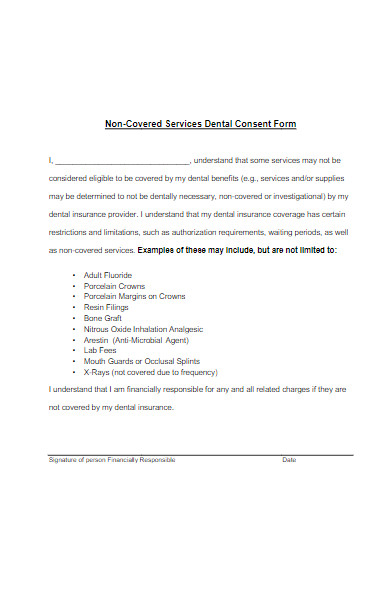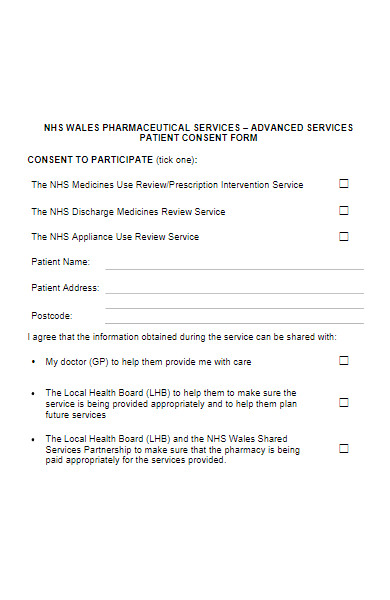Navigating through the pivotal aspects of service provision, the Service Consent Form emerges as an indispensable tool, securing clear communication and agreement between service providers and recipients. This pivotal document, laden with details of the services, potential risks, and client rights, meticulously intertwines legality and ethics, ensuring transparency and safeguarding parties’ interests. Exploring its meanings, types, and formulations uncovers the nuanced roles it plays in varied sectors, from healthcare to technology, crafting a consensual and informative pathway through services rendered.
What is a Service Consent Form? – Definition
A Service Consent Form is a legal document that is used to obtain a client’s approval before providing a specific service. This form typically details the service to be rendered, any associated risks, costs, and other relevant information, ensuring that the client is well-informed and agrees to the terms and conditions stipulated. It serves to protect both the service provider and the client by establishing clear expectations and preventing potential disputes, thus ensuring that the service process proceeds smoothly and transparently.
What is the Meaning of the Service Consent Form?
The meaning of a Service Consent Form pertains to a document utilized in various service industries, which seeks to gain explicit approval from an individual before a specific service is rendered. It is a vital legal and ethical tool that explains in detail the service to be provided, potential risks, costs, and other relevant information, ensuring that the individual is making an informed decision to proceed. These printable form thus not only provides clarity and agreement between the service provider and the recipient but also serves as a protective measure against future disputes by documenting informed and willful consent.
What is the Best Sample Service Consent Form?
Developing a detailed and effective Service Consent Form involves ensuring that it encapsulates all necessary information, meets legal requirements, and is easily comprehensible to the service recipient. Here’s a detailed breakdown to construct an adept Service Consent Form:
Best Sample Service Consent Form: Essential Components
- Header:
- Title: Explicitly stated, such as “Service Consent Form”.
- Service Provider Details: Name, address, contact details of the entity/individual providing the service.
- Service Description:
- Scope: Clearly articulate the services being provided.
- Duration: Define the time frame during which the services will be rendered.
- Limitations: Explicitly state any constraints or limitations of the service.
- Client’s Details:
- Include fields for the client’s name, date of birth, address, and other relevant information.
- Consent Statement:
- Acknowledgment: A section where clients acknowledge they understand and agree to the services provided.
- Affirmation: Statement affirming they have had ample opportunity to ask questions and seek clarification.
- Risk and Benefit Acknowledgment:
- Clearly lay out potential risks and anticipated benefits tied to the service.
- Privacy and Confidentiality:
- Detail how personal and service data will be used, stored, and protected.
- Include provisions regarding data sharing and specify conditions under which information might be disclosed.
- Financial Aspects:
- Fee Structure: Clearly outlined costs and payment expectations.
- Refund Policy: Define under what circumstances, if any, refunds may be provided.
- Rights and Responsibilities:
- Outline both the service provider’s and client’s rights and obligations.
- Withdrawal of Consent:
- Explain the client’s right to withdraw consent, and the process and implications of doing so.
- Signature Section:
- Consent Confirmation: Spaces for client signature, printed name, and date, affirming their understanding and agreement.
- Provider Confirmation: Similar acknowledgment section for the service provider.
- Witness/Notary (if applicable): Signature and credentials of a witness or notary.
- Appendices or Addendums:
- Attach additional information, such as detailed service descriptions, terms and conditions, or privacy policies.
Additional Tips:
- Use Clear Language: Ensure the form is easily understandable, avoiding jargon and complex terminology.
- Legal Compliance: Ensure the form adheres to applicable local, state, and federal laws, especially regarding data protection and client rights.
- Accessibility: Ensure it’s accessible, offering alternative formats (e.g., digital, large print) if necessary.
- Consult a Professional: Engage a legal professional to review the form, ensuring it meets all regulatory and legal standards.
By ensuring all these aspects are well-addressed in your Service Consent Form, you pave the way for transparent, lawful, and client-friendly service provision, safeguarding both parties’ interests and fostering a trustworthy service relationship.
FREE 35+ Service Consent Forms in PDF
When is it necessary to use a Service Consent Form?
A Service Consent Form is necessary in various scenarios where a service provider and a service recipient engage in a transaction or interaction involving the provision of services. Here are some circumstances in which using a Service Consent Form becomes essential:
- When Providing Professional Services:
- Services like healthcare, legal advice, financial consultancy, and other professional services typically involve handling sensitive information and making pivotal decisions on behalf of clients.
- Engagement Involving Risk:
- Services that may pose certain risks or have potential side effects, such as medical procedures or participation in certain physical activities, necessitate clear acknowledgment and consent from participants.
- Data Handling and Privacy:
- When services involve the collection, use, or sharing of personal or sensitive data, a consent form ensures that clients are aware and agree to the manner in which their data will be utilized.
- Services to Minors or Vulnerable Populations:
- In scenarios where services are being provided to individuals who may require additional legal protections, such as minors or individuals with certain disabilities.
- Utilization of Created Content:
- When a service involves creating content, such as photography, video production, or testimonials, that might be used for promotional purposes.
- Participation in Research:
- For research purposes, where participants’ data will be utilized for studies, findings, and possibly, publication.
- Subscription-Based Services:
- When clients subscribe to a continuous service, especially those involving recurring payments or ongoing obligations from either party.
- Online Platforms and Digital Services:
- The provision of online services, software use, or access to digital platforms, ensuring users comprehend and agree to terms of use, data handling practices, and other pertinent aspects.
- Event Participation:
- When organizing events or activities where participants should be aware of the terms of participation, potential risks, or usage of their images or contributions.
- Contractual Agreement:
- When the service provision involves certain deliverables, timelines, or specific quality, ensuring both parties are in agreement regarding expectations and outcomes.
Utilizing a Service Consent Form in these instances ensures that service providers operate transparently and ethically, while service recipients are well-informed, their rights are protected, and they engage in services voluntarily and with full knowledge of all pertinent factors. This practice not only safeguards both parties legally but also establishes a foundation of trust and professionalism in their interaction.You should also take a look at our Sample Consent Form.
How do I properly fill out a Service Consent Form?
Filling out a Service Consent Form requires diligence, attentiveness, and understanding to ensure that all the details provided are accurate and that you comprehensively grasp the terms to which you are consenting. Here’s a step-by-step guide to assist you:
Step 1: Understand the Document
- Read Thoroughly: Go through every section, understanding the service’s nature, scope, and other details.
- Ask Questions: If anything is unclear, reach out to the service provider for clarification.
Step 2: Personal Details
- Full Name: Ensure it matches your legal documents.
- Contact Information: Provide accurate and active phone numbers or email addresses.
- Address: Mention your current residing address.
Step 3: Service Details
- Type and Nature: Acknowledge the service you’re receiving.
- Duration: Note the service’s length or frequency.
- Costs: Understand and confirm all charges and payment terms.
Step 4: Understanding Terms and Conditions
- Obligations: Recognize your obligations and those of the service provider.
- Limits of Liability: Know the extent to which the service provider is liable.
- Privacy Policies: Learn how your data will be handled.
Step 5: Special Conditions
- Additional Clauses: Be aware of any additional conditions or clauses specific to the service.
- Opt-Out Options: If there are optional terms or services, make informed selections.
Step 6: Acknowledge Risks or Disclaimers
- Potential Risks: Understand any risks involved in the service.
- Disclaimers: Note any disclaimers provided by the service provider.
Step 7: Consent and Agreement
- Voluntariness: Ensure your consent is voluntary and not under duress.
- Full Agreement: Only proceed if you fully agree with all terms.
Step 8: Signature
- Sign: Affix your signature, signifying agreement and consent.
- Date: Mention the date clearly.
- Witness: If required, have a witness sign the document.
Step 9: Document Copies
- Keep a Copy: Always retain a copy of the signed consent form for your records.
- Digital Backup: Consider keeping a digital copy as a backup.
Step 10: Revisions or Renewals
- Validity: Be aware of the form’s validity duration.
- Renewals: If necessary, note when the consent form might need to be renewed.
Additional Notes:
- Honesty: Provide honest and true information.
- Updates: Keep the service provider informed if there are any changes in your information or circumstances.
Remember, signing a Service Consent Form implies you comprehend and agree to all its terms, ensuring you’ve read and understood everything. If any aspect is unclear or seems unfair, seek clarification or consult with a professional before signing.
Can a Service Consent Form be completed and submitted online?
Yes, a Service Consent Form can often be completed and submitted online, particularly with many businesses and services adopting digital practices to enhance convenience for their clients. Online fillable form submission might be facilitated through a secure portal on a service provider’s website, via email with an electronic signature, or through an e-signature platform like DocuSign. It’s vital to ensure that the online submission method complies with applicable laws and regulations, safeguarding personal information and validating the consent’s legitimacy. Always ensure to retain a copy of the completed form for your records and confirm receipt with the service provider.
What specific information is required to complete a Service Consent Form?
A Service Consent Form typically requires the following specific information:
- Personal Information:
- Full Name
- Date of Birth
- Contact Information (e.g., phone number, email address, mailing address)
- Service Details:
- Description of the service being provided
- Potential risks and benefits
- Alternative options available
- Consent Details:
- Explicit statement of consent, confirming the client understands and agrees to the services
- Any limitations or conditions attached to the consent
- Duration of Consent:
- Start date and end date (if applicable) of the consent validity
- Data Protection:
- Information about how personal data will be used and stored
- Assurance of confidentiality and privacy protection
- Client Rights:
- Explanation of the client’s rights to withdraw consent at any time
- Processes to amend or review consent
- Signatures:
- Signature of the client (or guardian)
- Date of signing
- Provider Information:
- Name and contact details of the service provider
- Credentials or qualifications relevant to the service
- Emergency Contacts:
- Names and contact details of individuals to reach in case of emergency
Note: The specific requirements might vary based on the type of service, jurisdiction, and applicable laws. Always ensure that your Service Consent Form is compliant with local, state, and federal regulations.
Is my information safe on a Service Consent Form?
The safety of your information on a Service Consent Form format largely depends on the protocols and measures implemented by the entity requesting the consent and how securely they manage the data. Legally, organizations are required to safeguard the personal information they collect, adhering to various data protection and privacy laws, such as the General Data Protection Regulation (GDPR) or the Health Insurance Portability and Accountability Act (HIPAA), depending on the jurisdiction and type of data. Ensure to inquire about and understand their data protection practices, including how they store, use, and share your information. Always provide your data to reputable entities and via secure channels.
Who has access to the information provided on a Service Consent Form?
The access to the information provided on a Service Consent Form sample is typically restricted to the entity to which you’re submitting the form and their authorized personnel. Depending on the organization and the nature of the service being provided, different departments or roles might access your data for specific purposes, such as customer service, billing, or service delivery. Moreover, the organization might share your information with third parties only if it is necessary for completing a requested service or if it’s stipulated in their privacy policy. Legal and regulatory compliance might also necessitate limited data sharing. Always review privacy policies and data use statements to understand how your information will be handled and who may access it.
How can I obtain a copy of a Service Consent Form?
Obtaining a copy of a Service Consent Form can usually be done through several means, depending on the service provider or the organization in question.
- Website: Often, service providers offer downloadable versions of their consent forms on their official website. Check under sections like “Resources,” “Downloads,” or “Forms.”
- In-Person: Visit the physical location of the service provider and request a copy directly. They should be able to provide you with a physical or electronic copy.
- Contact Customer Service: You may call, email, or use the live chat feature (if available) on their website to request the form.
- Through Email: Sometimes, if you request a service or an appointment online, service providers will email you a copy of the consent form to fill out in advance.
- Via Postal Mail: If you prefer a physical copy and are unable to visit in person, you might request them to mail it to your address.
- Patient or Customer Portal: If the service provider has an online portal, log in to your account and check for available forms that you can download and print.
- Legal Representatives: If applicable, your lawyer or legal advisor might be able to provide or help you obtain a specific consent form.
Always ensure to store a copy for your records once you have filled out and submitted the form. If you previously submitted a form and need a copy of it, contacting the service provider’s customer service or your account manager (if applicable) would typically be the first step in obtaining it. Remember to verify the version of the form if it’s from an external source to ensure its validity and acceptance by the service provider.Our Basic Consent Forms is also worth a look at
How do I create a compliant Service Consent Form for my business or practice?
Creating a compliant Service Consent Form for your business or practice involves understanding the legal and ethical requirements relevant to your industry, ensuring clarity, and safeguarding the data collected. Here’s a step-by-step guide:
1. Understand Legal Requirements:
- Research Regulations: Understand and adhere to local, state, and federal laws pertaining to consent and data protection (like GDPR or CCPA).
- Industry Standards: Be mindful of any industry-specific regulations or guidelines that you must adhere to.
2. Clear and Concise Language:
- Simple Language: Ensure that the language used is simple, clear, and easy for clients to understand.
- Explicit Content: Clearly outline the services provided, potential risks, and client rights.
3. Specify the Purpose:
- Define Purpose: Clearly articulate why you are collecting the information and how it will be used.
- Limitations: Define any limitations to the services being provided.
4. Detail the Scope of Consent:
- Scope and Limitations: Define what the client is agreeing to, and any limitations of the service.
- Duration of Consent: Specify how long the consent is valid.
5. Include Vital Information:
- Client Data: Have fields for the client’s personal details like name, date of birth, and contact information.
- Service Details: Describe the specific services that require consent.
- Risk Factors: Discuss potential risks or side effects.
6. Privacy and Data Security:
- Data Usage: Explain how the client’s data will be used and stored.
- Data Security: Describe how you will protect their data and privacy.
- Data Sharing: If applicable, explain if and how the data might be shared with third parties.
7. Withdrawal of Consent:
- Procedure: Describe how clients can withdraw their consent.
- Implications: Discuss any consequences or implications of withdrawing consent.
8. Signature and Date:
- Signature: Include a space for the client’s signature (digital or physical) and date.
- Guardian Signature: If applicable, ensure space for a guardian or legal representative to sign.
9. Review and Update Regularly:
- Legal Review: Have a legal professional review the form to ensure compliance with all regulations.
- Updates: Ensure that the form is updated whenever there are changes to laws or your services.
10. Accessibility and Storage:
- Accessibility: Ensure the form is easily accessible to all clients.
- Safe Storage: Securely store all collected data and consent forms.
11. Client Copy:
- Provision: Always provide a copy of the signed consent form to the client for their records.
Ensuring the creation of a robust and compliant Service Consent Form will help protect your practice or business legally and ethically, ensuring transparent communication with your clients. Always adapt your forms as per any changes in legal or industry standards.
How to Create a Service Consent Form?
Creating a Service Consent Form involves designing a document that is legal, transparent, and straightforward to ensure that the client understands the scope and nature of the services being provided. Here’s a comprehensive step-by-step guide on how to create a Service Consent Form:
Step 1: Understand Legal and Ethical Requirements
- Research Relevant Laws: Understand and comply with relevant federal, state, and local laws related to service consent and data protection.
- Industry Guidelines: Ensure that the form adheres to industry-specific guidelines and ethical standards.
Step 2: Define the Scope of the Service
- Specify Services: Clearly outline the services to be provided, including the process, duration, and outcomes.
- Include Limitations: Detail any limitations or exclusions in the provided services.
Step 3: Mention Risks and Responsibilities
- Detail Risks: Clearly lay out any potential risks or negative outcomes related to the services.
- Explain Responsibilities: Articulate the responsibilities of both the service provider and the client.
Step 4: Data Handling and Privacy
- Explain Data Usage: Describe how the client’s data will be used, stored, and protected.
- Third-party Sharing: Mention any circumstances under which the data might be shared with third parties.
Step 5: Include a Section for Rights and Withdrawal of Consent
- Describe Client Rights: Articulate the client’s rights regarding service refusal, alternative services, and complaints.
- Withdrawal Process: Explain the process for withdrawing consent and any implications thereof.
Step 6: Implement a Space for Client Details
- Personal Details: Include sections for name, contact information, and other relevant client data.
- Additional Notes: Optionally, provide space for any specific client requests or notes.
Step 7: Signature and Verification
- Signature Block: Create a space for the client’s signature (or guardian, if applicable) and the date.
- Verification: Include a checkbox or similar to ensure the client affirms their understanding and agreement.
Step 8: Use Clear and Accessible Language
- Simple Terms: Ensure all text is in layman’s terms and free from jargon.
- Language Accessibility: Optionally, provide translations or accessibility features for diverse clients.
Step 9: Legal Review
- Consult a Legal Expert: Have the form reviewed by a lawyer to ensure it meets all legal requirements.
- Adjustments: Make any necessary adjustments based on legal feedback.
Step 10: Create a Storage and Retrieval System
- Data Storage: Implement secure data storage for signed consent forms, adhering to data protection laws.
- Data Retrieval: Ensure that the forms can be easily retrieved when needed.
Step 11: Client Copy and Accessibility
- Provide Copies: Always give a copy of the completed form to the client.
- Ensure Accessibility: Make sure forms are easily accessible and available in multiple formats (physical, digital).
Step 12: Periodical Review and Update
- Review: Regularly review the form to ensure it continues to comply with laws and industry standards.
- Update: Promptly update the form when there are changes in services, laws, or policies.
Creating a Service Consent Form that is legal, ethical, and client-friendly is paramount in safeguarding both service providers and clients, ensuring clear communication and understanding from all parties involved.
Tips for creating an Effective Service Consent Form
Creating an effective Service Consent Form involves balancing legal compliance, clarity, and a user-friendly approach to ensure the client understands and agrees with the terms of service being provided. Here are some essential tips to create a comprehensive and efficient Service Consent Form:
1. Clarity is Key:
- Use Simple Language: Avoid jargon and legalistic terms that can confuse clients.
- Be Explicit: Clearly outline services, risks, and obligations to avoid ambiguity.
2. Legal Compliance:
- Adhere to Laws: Ensure the form complies with relevant federal and local laws.
- Include Necessary Clauses: Ensure all legal requirements and clauses are present.
3. Define Scope of Service:
- Detail Services: Explicitly describe the service(s) being provided, including any limitations.
- Timeframe: Specify the duration and schedule of the service.
4. Highlight Risks and Obligations:
- Mention Potential Risks: Be transparent about any possible risks involved in the service.
- Outline Responsibilities: Clearly describe the obligations of both the client and service provider.
5. Data Privacy and Handling:
- Explain Data Use: Describe how client data will be used, stored, and protected.
- Clarify Third-Party Sharing: Specify any circumstances under which data might be shared.
6. Rights and Withdrawal Process:
- Explain Rights: Make sure the client is aware of their rights regarding services and data handling.
- Withdrawal of Consent: Include a clear explanation of the process and implications of withdrawing consent.
7. Accessibility and Understanding:
- Readable Format: Ensure the form is formatted in a way that is easy to read and understand.
- Language Options: Provide alternatives in different languages if possible.
8. Signature Section:
- Include Signature Space: Ensure there is clear space for signatures and date.
- Digital Signatures: Consider including an option for digital signing where relevant.
9. Review by Legal Professionals:
- Legal Oversight: Have the form reviewed by legal professionals to ensure all bases are covered.
- Regular Updates: Revisit and update the form periodically to maintain legal compliance.
10. User Experience:
- Easy Navigation: Ensure that the form is easy to navigate and fill out.
- Provide Assistance: Offer guidance or assistance for filling out the form when needed.
11. Keep Records:
- Safe Storage: Store filled forms securely, adhering to data protection regulations.
- Easy Retrieval: Ensure forms can be easily retrieved when needed.
12. Provide Client Copies:
- Offer Copies: Always provide the client with a copy of the completed form.
- Digital Access: If possible, give them digital access to their signed consent form.
Remember, the effectiveness of a Service Consent Form lies in its clarity, compliance, and user-friendliness. Ensuring that clients comprehend and willingly agree to the stipulated terms safeguards both parties and fosters a transparent client-service provider relationship.
A Service Consent Form is a pivotal document that secures clear, informed agreement from clients before commencing services, thereby protecting both parties legally and ethically. By understanding its meaning, exploring various types and examples, and adhering to a step-by-step creation guide, businesses ensure transparency, compliance, and fostered trust within client relationships, ensuring a solid foundation for successful service delivery and customer satisfaction.In addition, you should review our Model Consent Forms.
Related Posts
FREE 8+ Consent Agreement Contract Forms in PDF MS Word
FREE 9+ Sample Travel Health Forms in PDF MS Word
FREE 7+ Sample Service Contract Agreement Forms in PDF MS ...
FREE 13+ Sample Questionnaire Survey Forms in PDF Excel | Word
FREE 7+ Sample Survey Questionnaire Forms in PDF MS Word ...
FREE 31+ Survey Forms in PDF Excel | MS word
FREE 48+ Counseling Forms in PDF MS Word
FREE 9+ Video Consent Forms in PDF MS word
FREE 10+ Sample Interview Consent Forms in PDF MS Word
FREE 2+ Market Research Survey Forms in PDF
FREE 8+ Sample Transportation Contract Forms in PDF MS Word
FREE 14+ Massage Consent Forms in PDF Ms Word
FREE 7+ Therapy Consent Forms in PDF
FREE 6+ Caregiver Consent Forms in PDF MS Word
FREE 12+ Sample Informed Consent Forms in MS Word PDF | Excel

